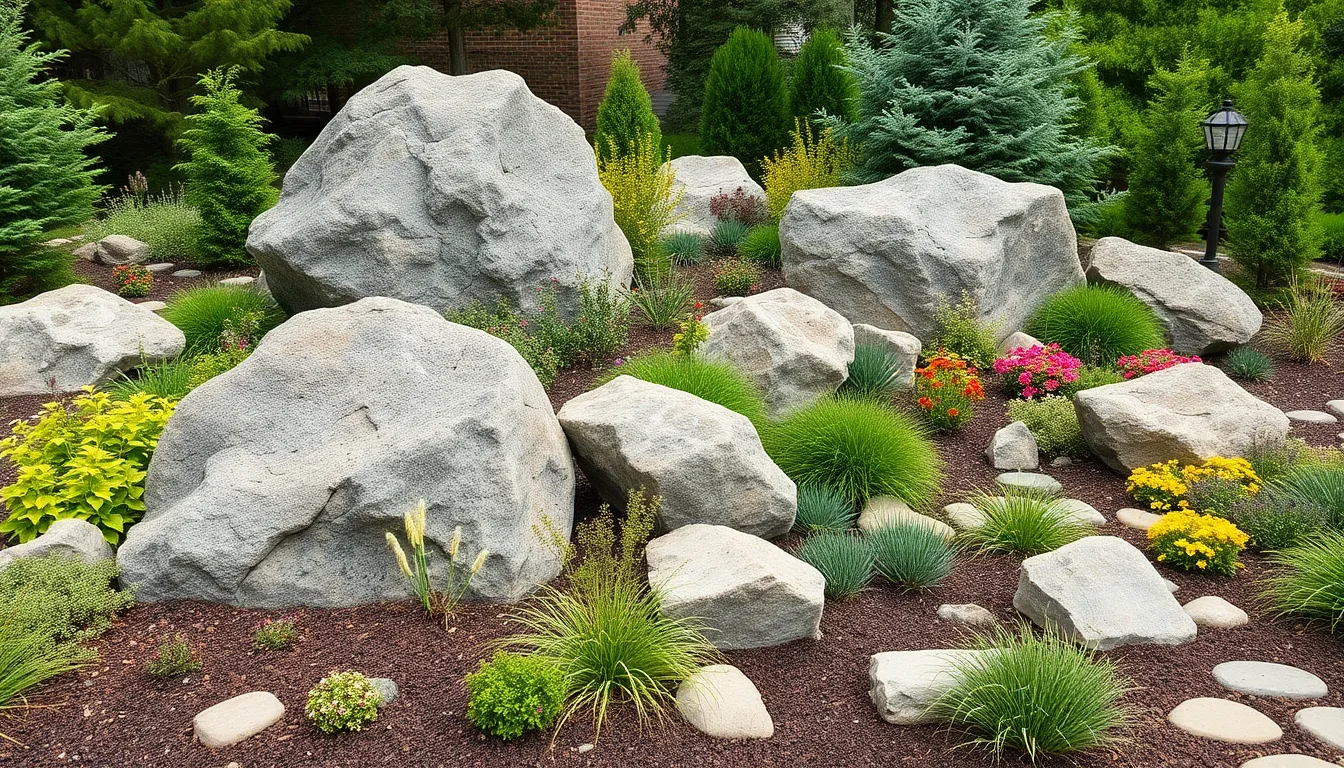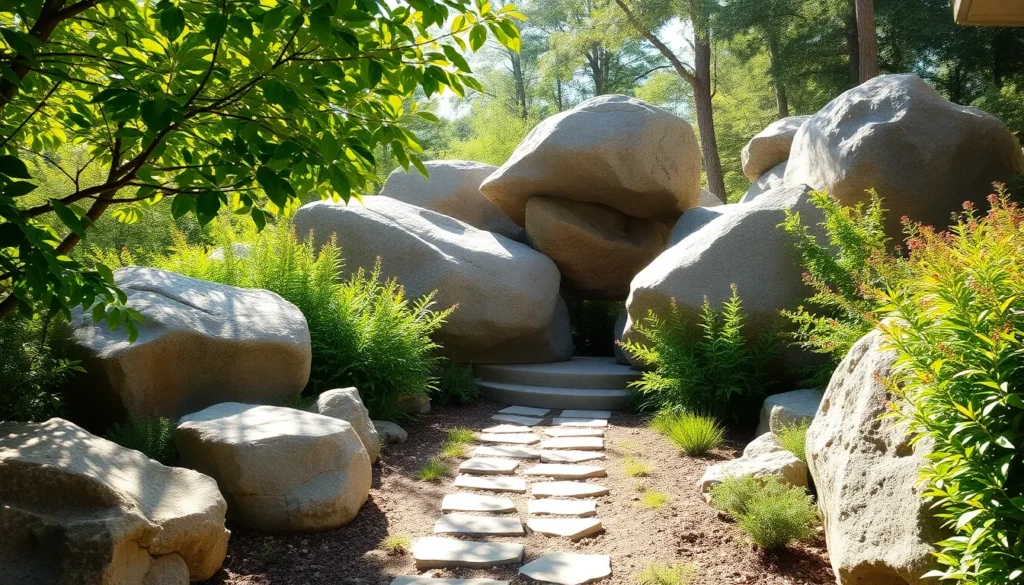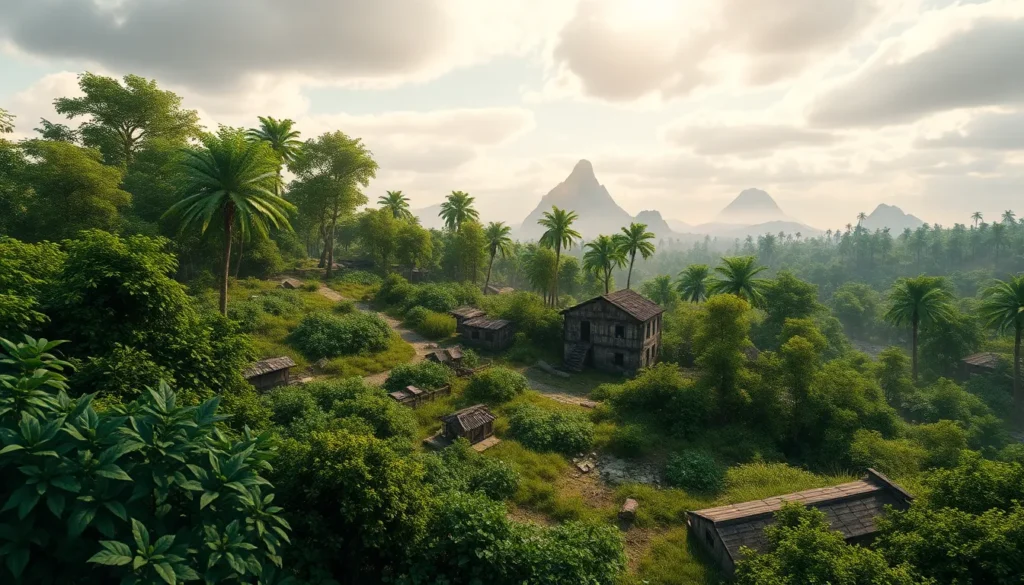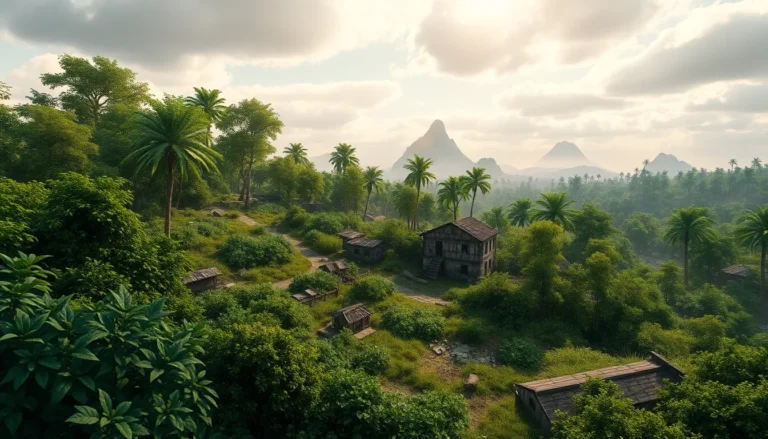Table of Contents
ToggleImagine transforming your yard into a stunning oasis that even Mother Nature would envy. Boulder landscaping does just that, bringing a touch of rugged beauty and a splash of elegance to outdoor spaces. Forget about cookie-cutter gardens; it’s time to embrace the unique charm that boulders can offer.
Whether it’s creating a serene rock garden or a dramatic retaining wall, boulders can turn any dull landscape into a jaw-dropping masterpiece. Plus, they’re low-maintenance—because who wants to spend their weekends weeding when they could be sipping lemonade? Dive into the world of boulder landscaping and discover how these natural wonders can elevate your outdoor haven, making it the talk of the neighborhood.
What Is Boulder Landscaping?
Boulder landscaping involves integrating large stones into garden design for aesthetic appeal and functional purposes. Homeowners often utilize boulders to create striking focal points, transforming ordinary yards into visually engaging spaces. Rock gardens frequently benefit from boulders, as these stones provide structure and contrast against plants.
Retaining walls made from boulders effectively manage soil erosion while enhancing the landscape’s visual appeal. Using boulders also allows for low-maintenance landscaping solutions, as these stones require minimal upkeep once installed. In desert or drought-prone areas, boulders can reduce the need for irrigation, as they complement native plant selections well.
Designers often suggest incorporating various sizes of boulders to enhance depth and interest. Boulder placement influences the overall look; clustering them creates natural habitats and improves drainage. Paths lined with smaller stones can guide visitors through the landscape while maintaining a cohesive design.
Landscapers may recommend using native plants alongside boulders, as these plants thrive with minimal intervention. Local plant species foster biodiversity and attract beneficial wildlife, contributing to a healthy ecosystem. When designing, considering the natural topography ensures boulders fit harmoniously within the environment.
Overall, boulder landscaping offers a blend of beauty and functionality, making outdoor spaces appealing and sustainable. Its versatility suits different styles, from modern to rustic, allowing homeowners to express their personal aesthetic while promoting environmental health.
Benefits Of Boulder Landscaping

Boulder landscaping offers numerous advantages, enhancing outdoor spaces through both beauty and functionality. It serves as an excellent way to elevate the visual attraction of gardens.
Aesthetic Appeal
Boulders integrate seamlessly into various garden styles. They create stunning focal points that draw attention. Different sizes and shapes add texture and depth, enhancing visual interest. Patterns formed by strategically placing boulders can lead to a more dynamic landscape. Rock gardens incorporating boulders bring together natural elements, creating harmony in the design. Homeowners appreciate the unique, rugged beauty that each boulder contributes, making outdoor areas feel more personalized and inviting.
Eco-Friendly Options
Boulders play a vital role in sustainability within landscaping. They reduce the need for irrigation by minimizing water loss through evaporation. Strategically placed boulders can control soil erosion, promoting healthier landscapes. Using native plants around boulders fosters biodiversity and supports local wildlife. Boulders also diminish the need for synthetic materials, promoting an eco-conscious approach to yard design. Adopting these natural elements enhances not only aesthetics but also environmental health. Choosing indigenous stones further reduces the carbon footprint, aligning with sustainable practices.
Designing Your Boulder Landscape
Creating a boulder landscape demands careful design to achieve aesthetic and functional benefits. Thoughtful choices in boulder selection and strategic placement enhance the overall appeal of outdoor spaces.
Choosing The Right Boulders
Selecting boulders involves considering size, color, and texture. Large boulders make bold statements, while smaller stones add subtle elegance. A color palette that complements surrounding plants and structures promotes visual harmony. Textured boulders can introduce unique contrasts, enriching the landscape’s tactile experience. Incorporating local stones fosters a sense of place and reduces environmental impact. Prioritizing a variety of boulder shapes enhances depth and interest throughout the landscape.
Placement Techniques
Employing effective placement techniques maximizes the impact of boulders. Arranging larger boulders as focal points captures attention in gardens. Situating stones in clusters creates a more natural look, similar to how they appear in nature. Depending on the desired effect, boulders can serve as borders for pathways or to form retaining walls. Layering boulders with native plants allows integration into the landscape, promoting biodiversity. Utilizing boulders to navigate sloped areas provides practical solutions, while maintaining aesthetics.
Maintenance Tips For Boulder Landscapes
Maintaining boulder landscapes requires attention to both seasonal changes and erosion prevention to ensure longevity.
Seasonal Care
Seasonal care involves different tasks throughout the year. Spring is ideal for removing debris and dead plant material. In summer, ensure adequate irrigation, especially for native plants that thrive alongside boulders. Autumn brings leaf removal and the opportunity to assess boulders for shifting or settling. Winter may require snow removal to prevent ice buildup around stones, protecting both aesthetics and structure. Regular checks for plant health ultimately contribute to a vibrant landscape.
Preventing Erosion
Preventing erosion is critical for maintaining a boulder landscape. Strategically placing boulders along slopes directs water flow and reduces soil displacement. Incorporate ground cover plants that help bind soil while adding visual interest. Mulching around plants enhances moisture retention and further mitigates erosion. Monitor drainage patterns during heavy rains to identify areas needing reinforcement. Implementing these practices secures the integrity of both boulders and surrounding soil.
Boulder landscaping stands out as a versatile and sustainable approach to enhancing outdoor spaces. By incorporating boulders, homeowners can achieve a unique aesthetic while benefiting from reduced maintenance and improved environmental health. This landscaping style not only creates stunning focal points but also supports biodiversity and soil conservation.
With careful selection and strategic placement, boulders can transform any yard into a visually appealing and functional landscape. Embracing this approach allows individuals to enjoy a personalized outdoor area that thrives year-round. As more people recognize the benefits of boulder landscaping, it’s clear that this trend will continue to grow, providing lasting beauty and sustainability for years to come.







